
Roots
The quiet hum of the scalp, a delicate ecosystem often out of sight, yet always at work. We tuck our hair away in bonnets for protection, for beauty, for the sacred pause of nighttime ritual. Yet, sometimes, this very act of care can turn, leaving behind an unwelcome itch, a persistent discomfort that whispers of imbalance. What causes this irritation?
It begins not with the bonnet itself, but with the intricate, living surface beneath it, and how our practices influence its delicate balance. To truly comprehend the scalp’s responses, we must first look at its foundational makeup and the microbial life that calls it home.

The Scalp’s Living Surface
The scalp is more than just skin; it is a vibrant landscape, teeming with specialized structures and a unique microbial community. Unlike the skin on other parts of the body, the scalp hosts a high density of hair follicles and sebaceous glands. These glands produce sebum, a natural oil that lubricates the hair and skin.
While sebum serves a protective role, an overproduction can create a rich environment for microorganisms. The scalp also has a particular pH, typically slightly acidic, which helps maintain a healthy microbial balance and barrier function.
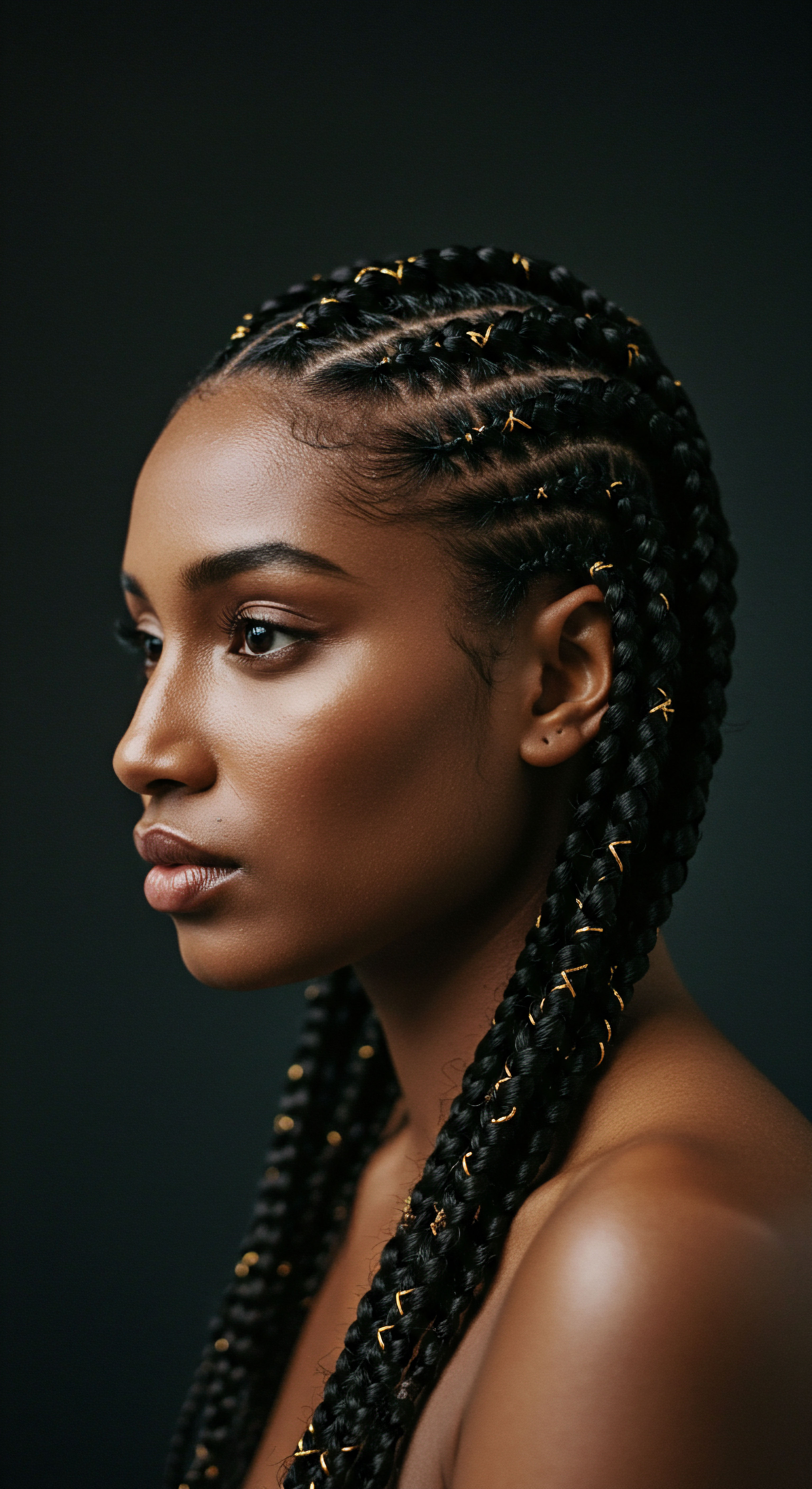
How Does Hair Anatomy Influence Scalp Health?
Textured hair, with its unique coil patterns, often presents a different set of considerations for scalp health. The very structure of the hair strand, from its elliptical cross-section to its often tightly curled nature, can affect how sebum travels down the hair shaft and how easily environmental particles settle on the scalp. The density of hair on the scalp also plays a role, creating a microclimate beneath bonnets that differs significantly from exposed skin. This enclosed environment can alter temperature and humidity, impacting the scalp’s resident microbiota.
The hair follicle, a tiny organ nestled within the skin, is the birthplace of each strand. Its health is paramount to overall scalp wellbeing. When conditions around the follicle become unfavorable, such as through irritation or inflammation, the growth cycle of the hair can be disrupted. This disruption may lead to concerns beyond simple discomfort, potentially affecting hair strength and appearance over time.
The scalp is a dynamic ecosystem, its health tied to a delicate balance of oil, pH, and microscopic life.
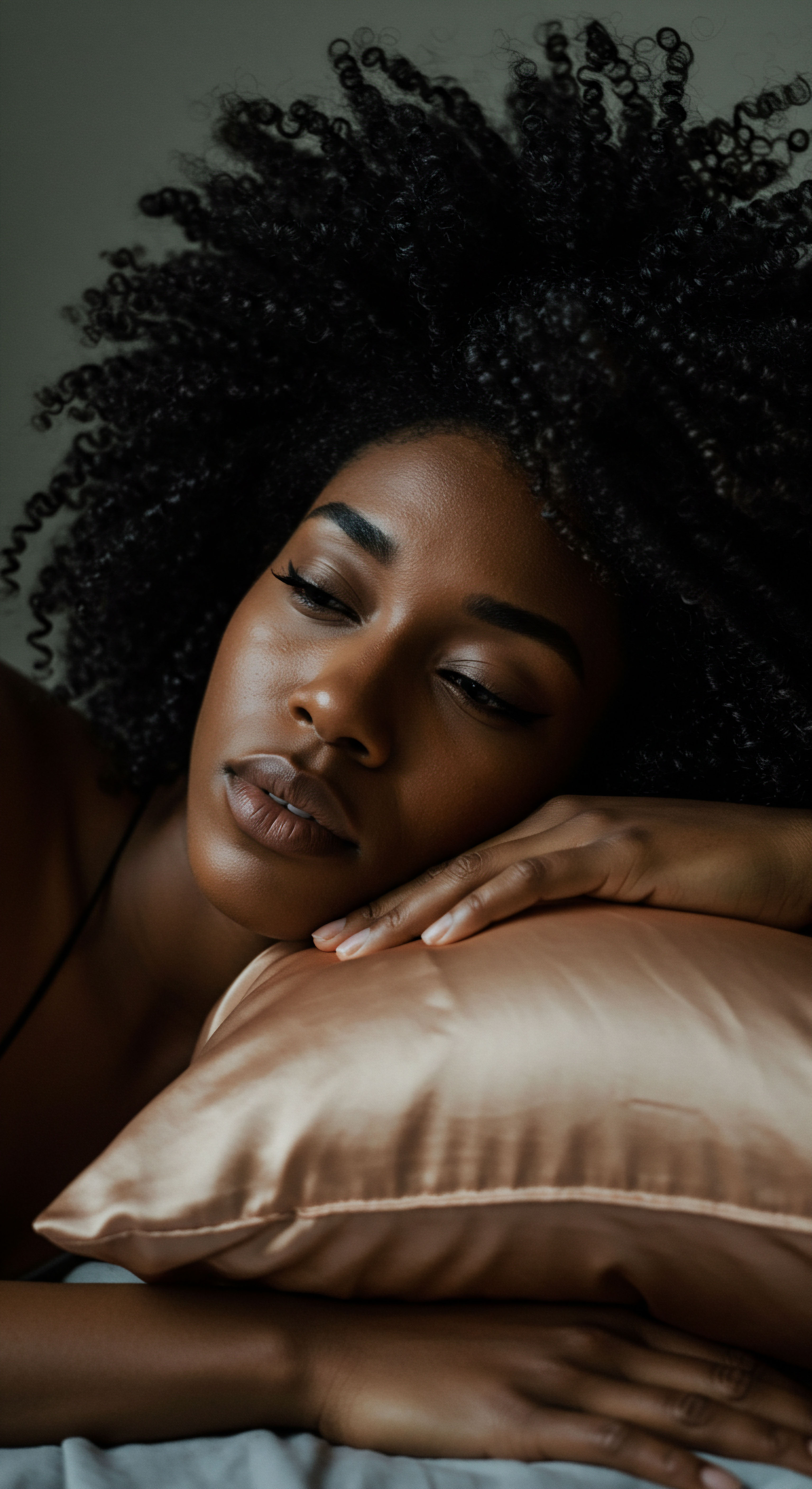
The Invisible Inhabitants
Beneath the visible hair, an entire universe of microorganisms resides on the scalp. This collection of bacteria, fungi, and even viruses, known as the scalp microbiome, plays a significant role in maintaining skin health. A balanced microbiome helps defend against harmful invaders and supports the skin’s barrier function. However, when this balance is disturbed, certain microorganisms can multiply unchecked, leading to various scalp concerns.
- Bacteria ❉ Certain bacterial species, such as those from the Cutibacterium (formerly Propionibacterium) and Staphylococcus genera, are common residents. While many are benign, an overgrowth of specific strains can contribute to irritation.
- Fungi ❉ Yeasts, particularly those of the Malassezia genus, are also a natural part of the scalp’s fungal population. An increase in Malassezia species is often linked to conditions like seborrheic dermatitis, which manifests as flaking, redness, and itching.
- Skin Barrier Function ❉ The skin barrier, the outermost layer of the scalp, acts as a protective shield. It prevents moisture loss and blocks the entry of irritants and pathogens. When this barrier is compromised, the scalp becomes more vulnerable to external aggressors and internal imbalances, leading to sensations of discomfort or visible irritation.
Understanding these fundamental aspects of scalp anatomy and its microbial landscape provides a grounding for exploring why an unclean bonnet can become a source of irritation. It highlights the intricate connections between our protective hair practices and the biological realities of our scalp.
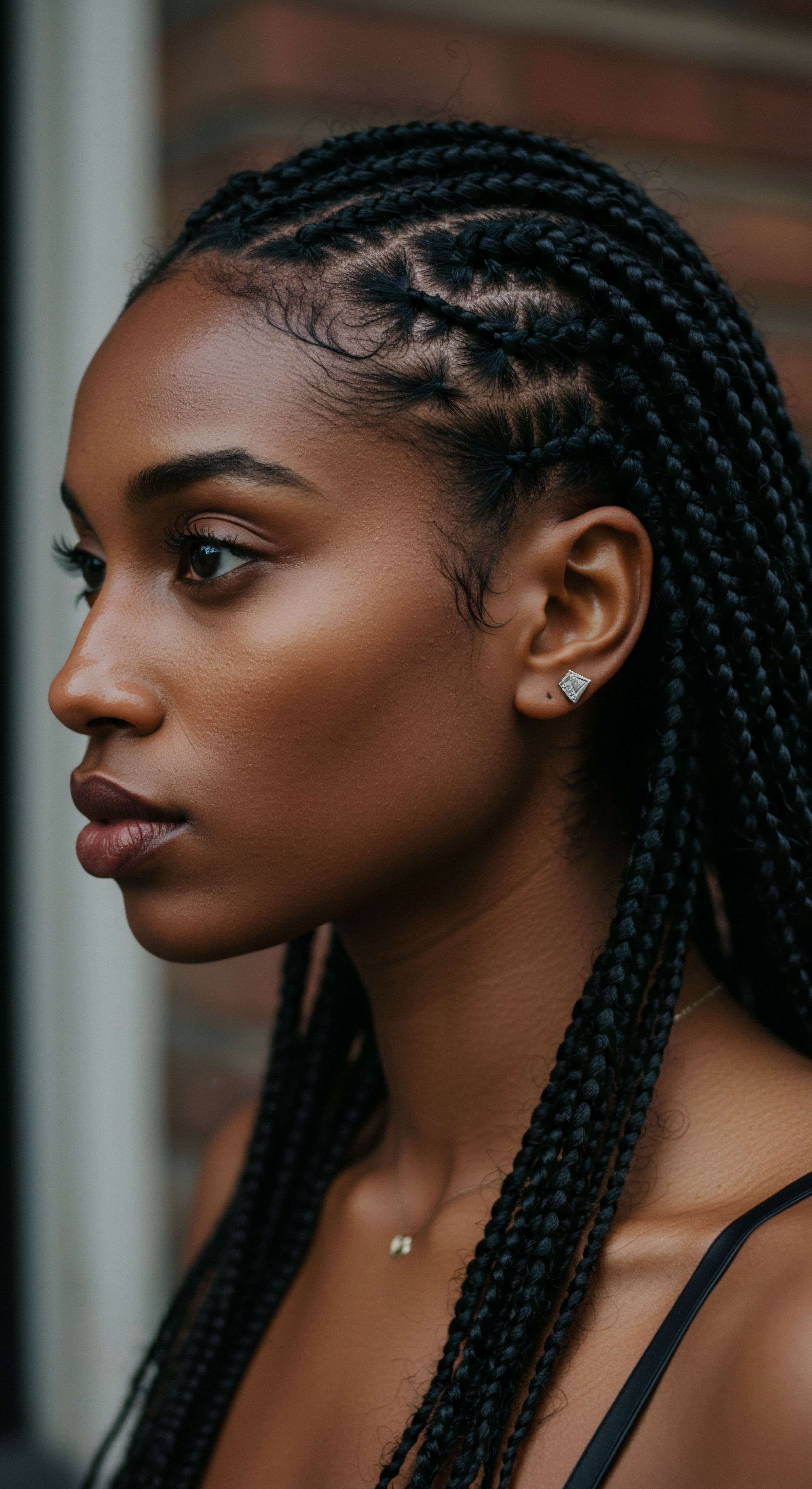
Ritual
Each night, as we prepare for rest, the bonnet becomes a quiet guardian, a soft embrace for our strands. This daily or nightly ritual, so central to textured hair care, aims to preserve moisture, reduce friction, and maintain style. Yet, the very nature of this protective practice, when not met with diligent hygiene, can inadvertently set the stage for scalp distress.
It is a dialogue between intention and outcome, where the details of our care rituals hold the key to comfort. Let us consider how these practices, particularly the use of bonnets, interact with the scalp’s delicate state.
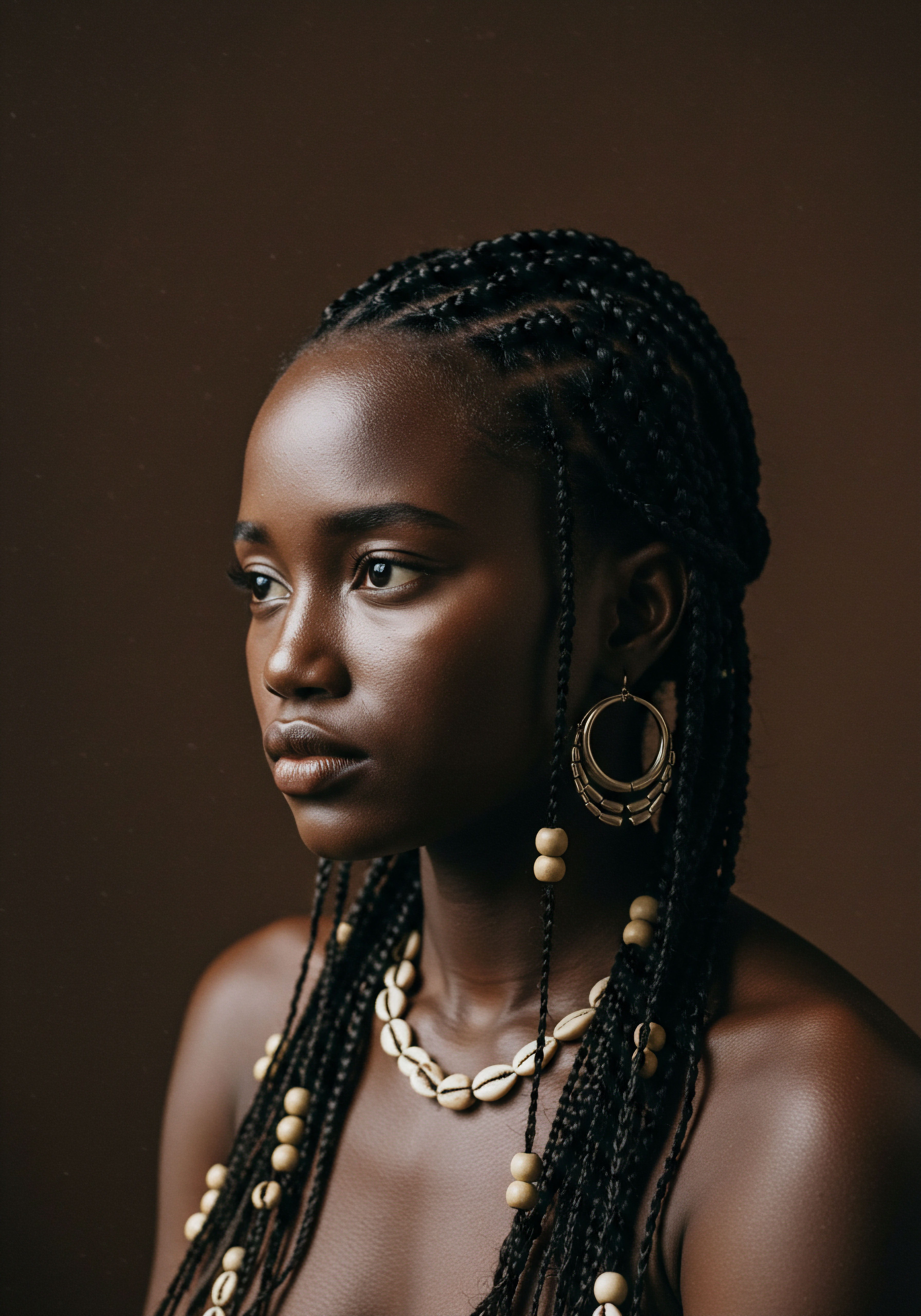
The Bonnet’s Microclimate
A bonnet, by its design, creates an occlusive environment around the scalp. This enclosed space alters the natural conditions that the scalp typically experiences. Temperature and humidity levels beneath the fabric rise, forming a warm, moist microclimate.
While this can be beneficial for hair moisture retention, it also provides an ideal breeding ground for microorganisms. The very warmth that soothes our hair can accelerate the growth of bacteria and fungi if the bonnet itself is not clean.

How Does Bonnet Material Affect Scalp Irritation?
The material of the bonnet plays a significant role in its impact on scalp health. Silk and satin are often favored for their smooth surfaces, which reduce friction on hair strands, minimizing breakage and frizz. However, any material, regardless of its texture, can accumulate oils, dead skin cells, and product residue over time.
Cotton, while breathable, can absorb moisture from the hair and scalp, potentially leading to dryness for some, or becoming saturated with sweat and sebum, creating a damp environment conducive to microbial growth. The interaction between the fabric and the scalp’s natural secretions is a silent partner in the story of irritation.
Consider a bonnet used nightly. Over days and weeks, it collects sebum, sweat, and shed skin cells. These elements, combined with the warmth and humidity of the covered scalp, become a nutrient-rich buffet for the microorganisms already present on the scalp.
A study comparing the scalp microbiome of women wearing hijabs to those not wearing them observed differences in microbial populations, with Staphylococcus capitis being more prominent in the hijab group, and Malassezia restricta also more common, suggesting an increased likelihood of seborrheic dermatitis. This provides a parallel to the microenvironment created by bonnets and their potential influence on scalp conditions.
The protective embrace of a bonnet, without proper cleaning, can transform into a warm, damp haven for unwanted microbial growth.

Accumulation and Contamination
The primary reason an unclean bonnet can lead to scalp irritation lies in the accumulation of substances and subsequent microbial overgrowth.
- Sebum and Product Residue ❉ Our scalps naturally produce sebum. Hair products, from oils to leave-in conditioners, also contribute to residue. These substances transfer onto the bonnet during wear. Over time, these build-ups become rancid, or simply act as food sources for microbes.
- Dead Skin Cells ❉ The scalp, like all skin, sheds dead cells. These microscopic flakes become trapped within the bonnet’s fabric.
- Bacteria and Fungi Proliferation ❉ The warm, moist environment inside a dirty bonnet, combined with the presence of sebum and dead skin, creates an ideal setting for bacteria and fungi to multiply beyond their healthy levels. This overgrowth can trigger inflammatory responses on the scalp.
The resulting irritation can manifest in various ways ❉ itching, redness, tenderness, or even small bumps. These are the scalp’s signals that its delicate balance has been disrupted. The ritual of protection, intended to shield and preserve, can, without conscious attention to hygiene, become a source of discomfort. Regularly washing bonnets is a simple yet profoundly impactful step in maintaining scalp wellbeing, ensuring the protective embrace remains a source of comfort, not contention.

Relay
Beyond the immediate sensations of itch or tenderness, the story of scalp irritation from an unclean bonnet extends into a deeper scientific and cultural conversation. It asks us to consider not only the visible symptoms but also the underlying biological responses and the historical contexts that shape our hair care practices. This is where the interplay of microbiology, immunology, and even social customs converge, offering a comprehensive understanding of why scalp comfort is so intimately linked to bonnet hygiene.
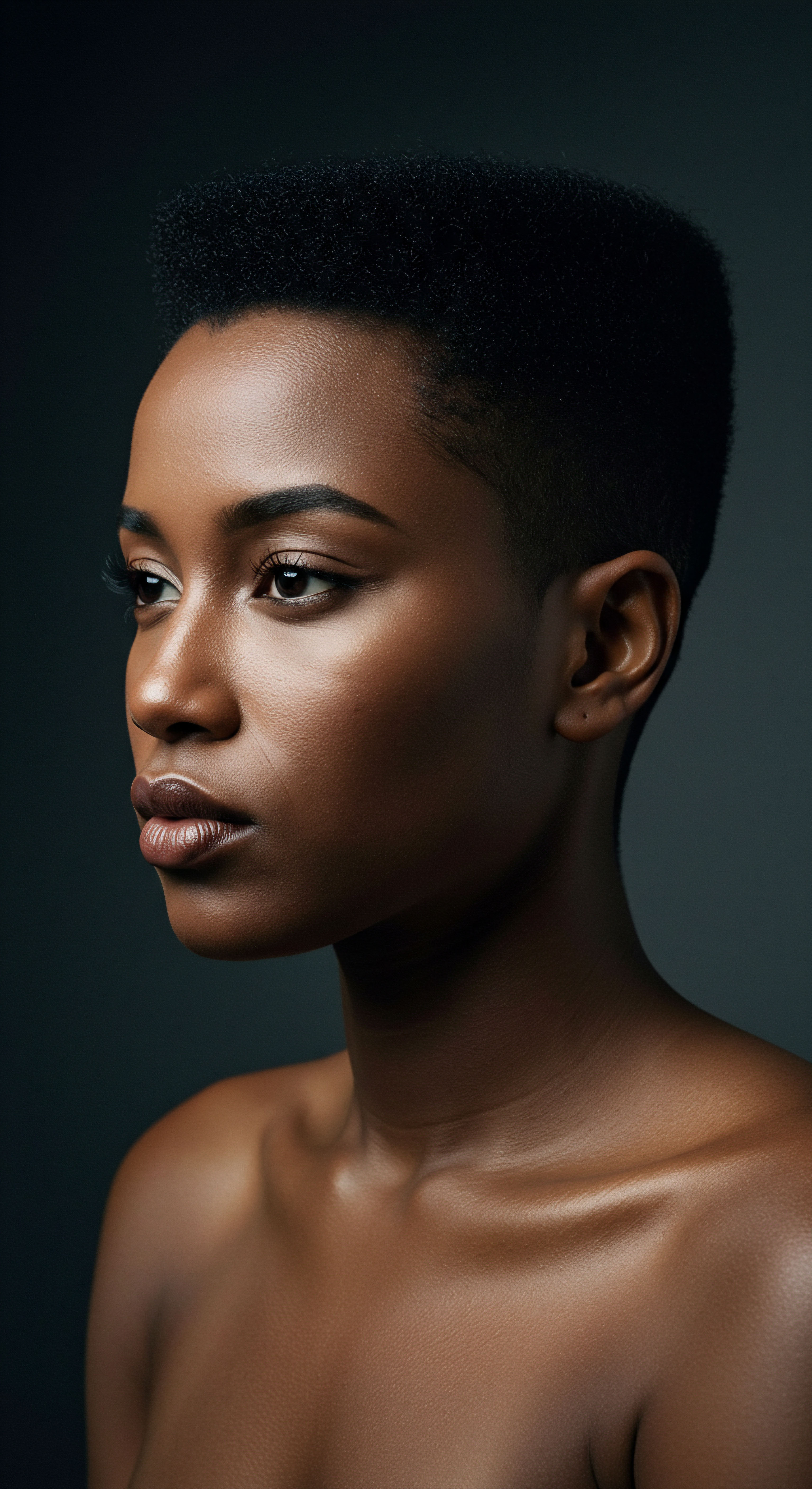
The Microbiological Battleground
The human scalp is a vibrant microbial habitat, hosting a diverse community of bacteria and fungi that typically coexist in a balanced state. When a bonnet is worn for extended periods without regular cleansing, it creates an environment ripe for dysbiosis – an imbalance in this microbial community. The warmth, moisture, and accumulated organic matter (sebum, sweat, dead skin cells, product residue) provide an unintended feast for certain microorganisms, allowing them to multiply beyond their beneficial levels.
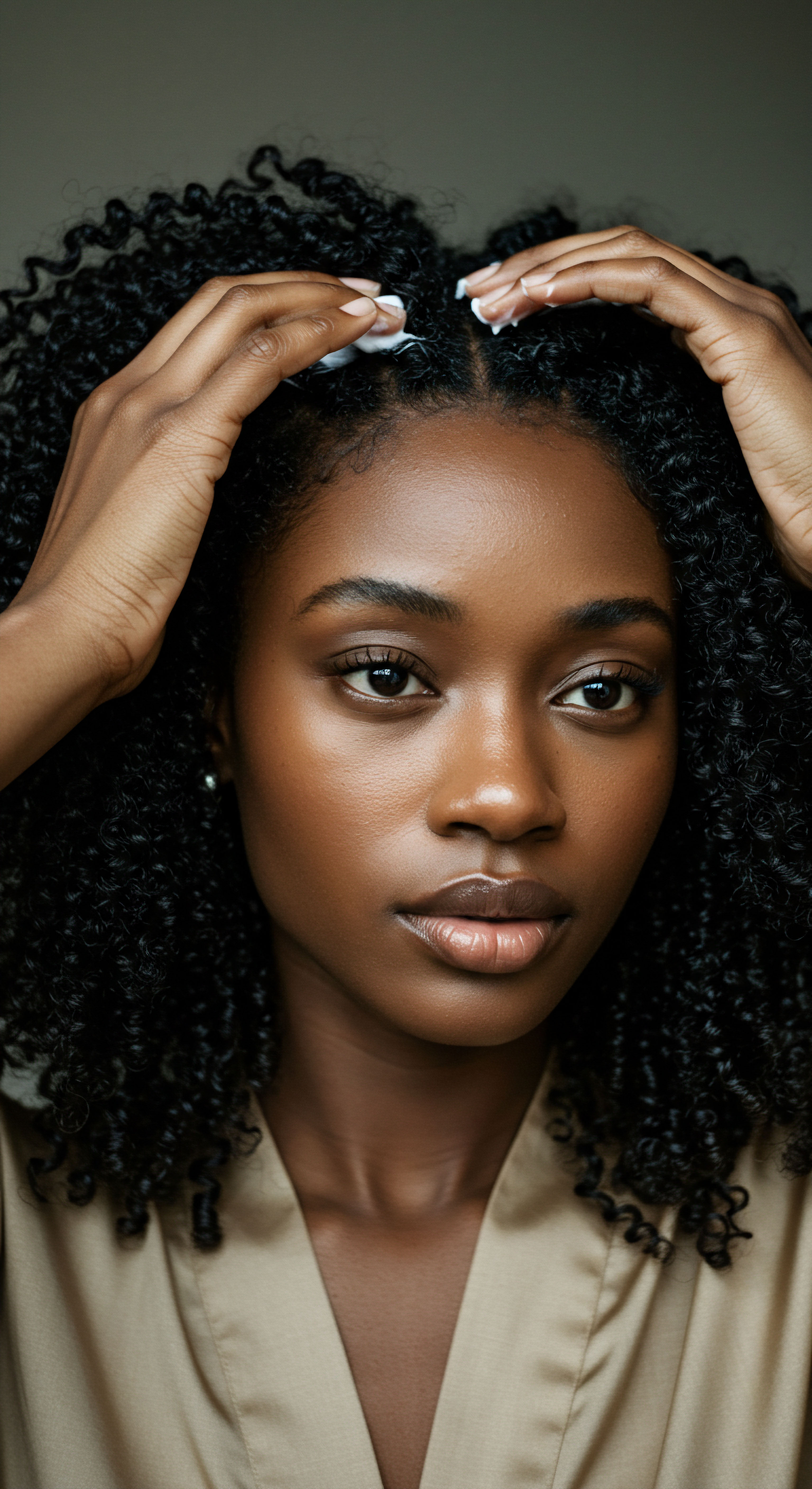
What Happens When Scalp Microbes Multiply?
An overgrowth of specific microbial species can trigger a cascade of inflammatory responses on the scalp. For instance, an increase in Malassezia yeasts, naturally present on the scalp, can lead to seborrheic dermatitis. These yeasts metabolize sebum, producing irritating byproducts like oleic acid, which can disrupt the skin barrier and cause flaking, redness, and persistent itching.
Similarly, an overabundance of certain bacteria, such as specific strains of Staphylococcus, can contribute to folliculitis, presenting as small, inflamed bumps around hair follicles. The skin’s immune system perceives these microbial shifts as a threat, activating defense mechanisms that result in the sensations of irritation.
The impact of this microbial shift is not merely anecdotal. A cross-sectional study investigating the scalp microbiome of women wearing hijabs compared to those not wearing them revealed distinct differences. The study found that Malassezia restricta was more common in the hijab-wearing group, suggesting a propensity for seborrheic dermatitis.
This data point, while specific to hijab use, underscores the broader principle ❉ occlusive head coverings, if not managed with meticulous hygiene, can alter the scalp’s microenvironment in ways that favor microbial overgrowth and subsequent irritation. The bonnet, therefore, is not a passive accessory; it actively influences the biological equilibrium of the scalp.

Beyond Microbes ❉ Physical and Chemical Stressors
While microbial imbalance is a primary driver, other factors contribute to irritation from unclean bonnets.
| Irritant Type Product Residue |
| Mechanism of Action Build-up of styling products, oils, and conditioners on the bonnet fabric. |
| Resulting Scalp Concern Can clog pores, act as an irritant, or become a food source for microbes. |
| Irritant Type Friction |
| Mechanism of Action Rough bonnet materials or movement during sleep rubbing against the scalp. |
| Resulting Scalp Concern Physical abrasion, weakening of the skin barrier, micro-tears. |
| Irritant Type Occlusion & Heat |
| Mechanism of Action Trapping heat and moisture, leading to sweat accumulation. |
| Resulting Scalp Concern Disruption of pH, maceration of the skin, increased microbial activity. |
| Irritant Type These factors often work in concert, amplifying scalp discomfort. |
The constant contact of a bonnet with the scalp, especially one laden with residue, can lead to mechanical irritation. This friction can compromise the skin’s barrier function, making it more permeable to irritants and more susceptible to inflammation. Moreover, some hair products, even those meant to be beneficial, can become irritating when allowed to accumulate and break down on fabric, particularly in a warm, enclosed space. This is a complex interplay, where seemingly minor factors contribute to a significant overall impact on scalp wellbeing.
The scalp’s response to an unclean bonnet is a complex interaction of microbial shifts, physical abrasion, and chemical reactions.

Cultural Contexts and Modern Practices
The practice of covering hair holds deep cultural and historical significance across many communities, particularly within textured hair traditions. From the protective wraps of African heritage to the religious head coverings observed globally, bonnets are a modern continuation of a long-standing custom. Understanding the historical and cultural roots of hair covering adds another layer to our discussion of scalp health.

How Do Hair Covering Traditions Inform Modern Scalp Care?
Historically, hair coverings served multiple purposes ❉ protection from the elements, modesty, and expressions of identity or status. While traditional practices often involved materials and cleaning rituals adapted to specific climates and resources, modern life introduces new variables. Synthetic fabrics, diverse product formulations, and varying environmental conditions all interact with the simple act of covering hair.
The awareness of scalp conditions linked to head coverings, such as certain forms of alopecia from tension, has grown, prompting a deeper look into the practical aspects of daily care. The wisdom of maintaining cleanliness, a principle embedded in many traditional hygiene practices, remains as pertinent as ever in our contemporary routines.
The scalp, in its silent language of irritation, relays a message about the need for equilibrium. It reminds us that our rituals, however well-intentioned, must align with the biological realities of our bodies. The science of microbiology and skin physiology, combined with an appreciation for cultural practices, provides the tools to address scalp irritation from unclean bonnets, transforming a potential source of discomfort into a true act of protective care.
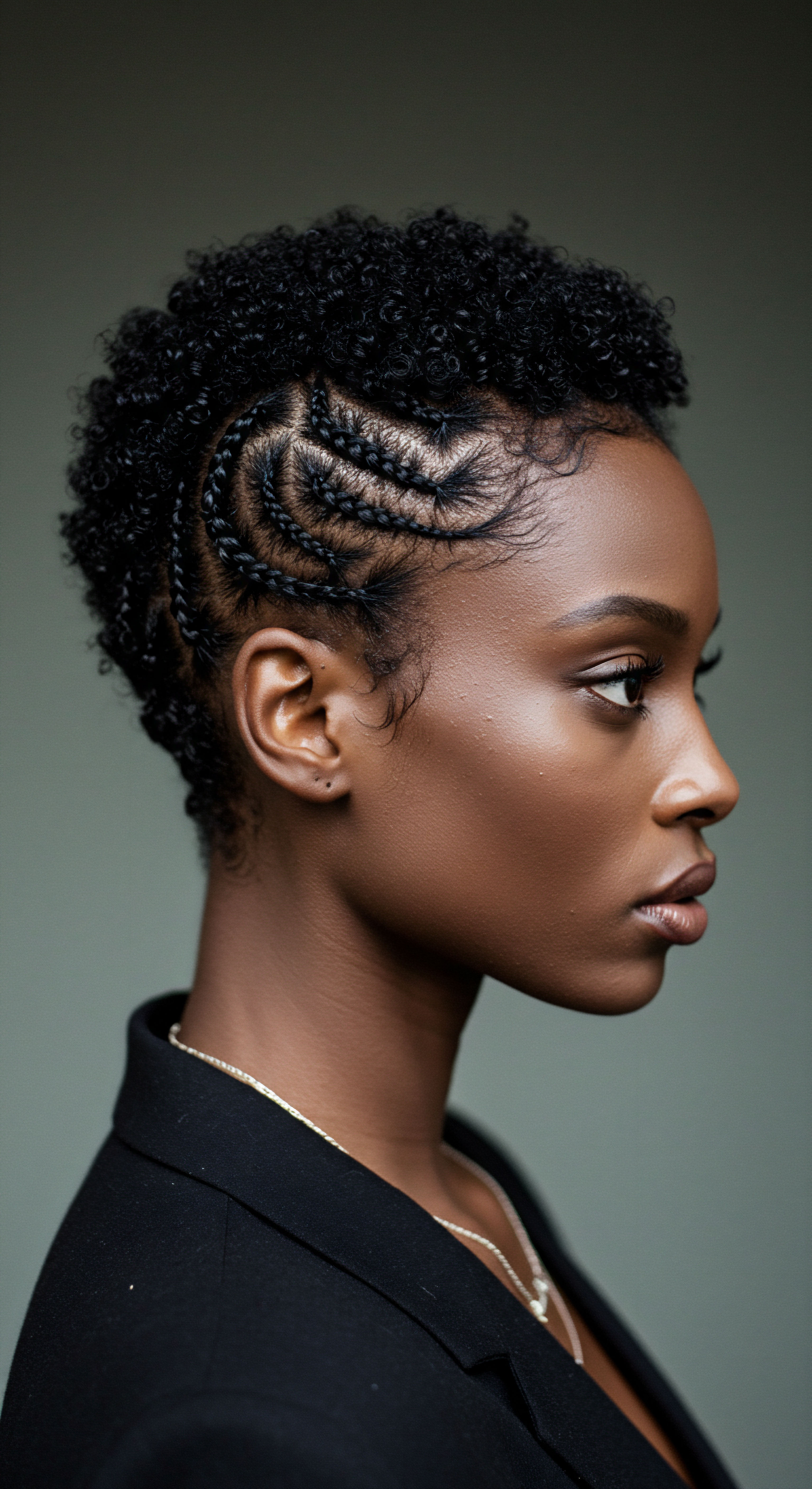
Reflection
As we draw this exploration to a close, the narrative of scalp irritation from unclean bonnets unfurls into a deeper appreciation for the delicate balance of our bodies and the significance of mindful care. It is a story not simply of cleanliness, but of the intricate dialogue between our personal rituals, the living world of our scalp, and the wisdom passed down through generations. The discomfort of an irritated scalp becomes a quiet signal, a reminder that true protection extends beyond covering; it demands attention to the unseen, a respect for the microscopic communities that reside with us, and a commitment to practices that honor our heritage while embracing scientific understanding. In tending to our bonnets, we tend to ourselves, upholding a timeless tradition of care that truly allows our crowns to rest and flourish.
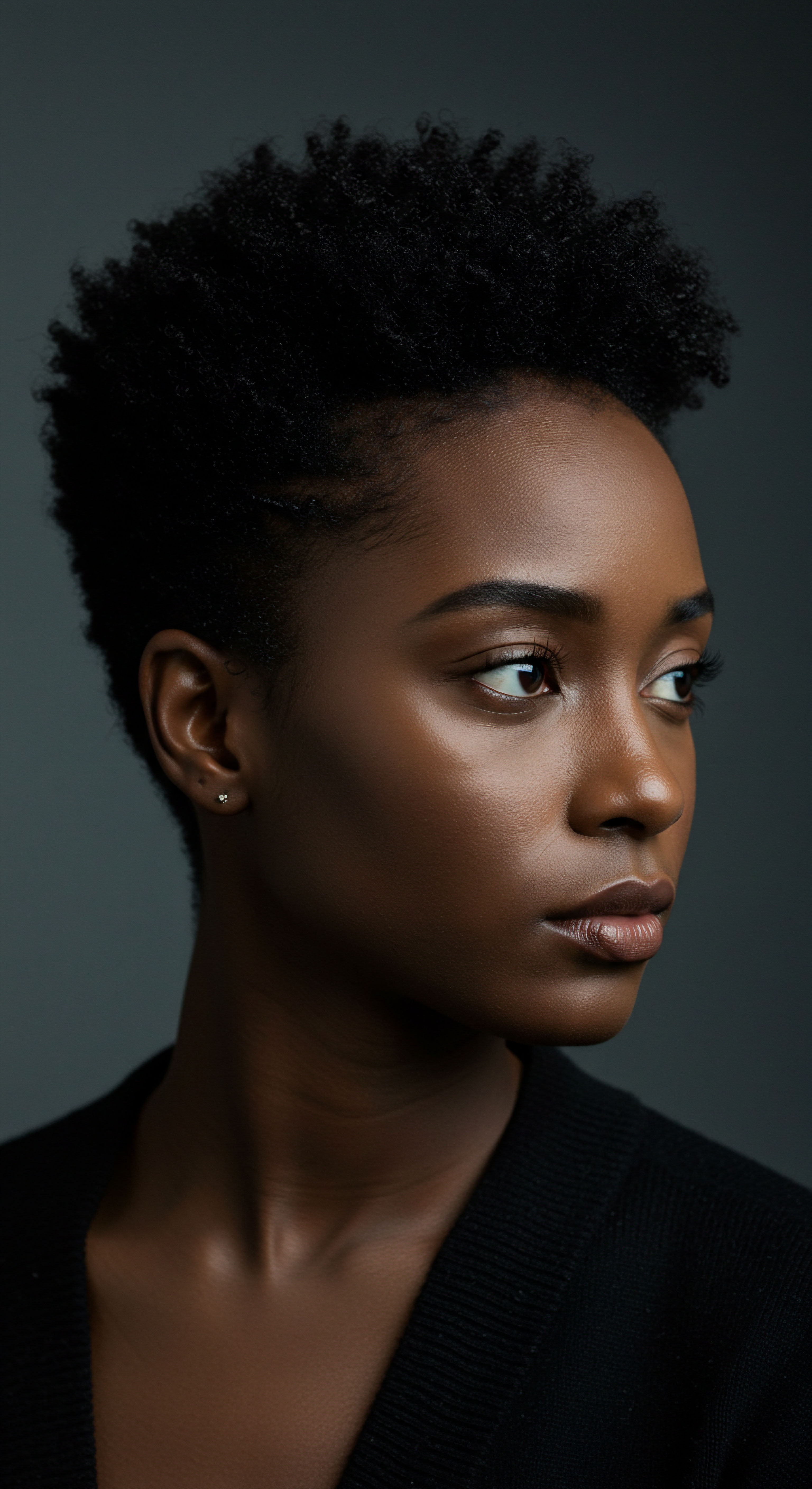
References
- Dawber, Rodney P.R. and Anthony F. Pascher. Handbook of Diseases of the Hair and Scalp. Blackwell Scientific Publications, 1991.
- McMichael, Amy, et al. Hair and Scalp Disorders ❉ Medical, Surgical, and Cosmetic Treatments. CRC Press, 2014.
- Chandrashekar, B. S. et al. IADVL Textbook of Trichology. Jaypee Brothers Medical Publishers, 2017.
- Noble, W. C. Microbiology of Human Skin. Lloyd-Luke (Medical Books) Ltd. 1981.
- Powell, Margaret K. A Cultural History of Hair in the Age of Enlightenment. Bloomsbury Academic, 2022.
- Biddle-Perry, Geraldine. A Cultural History of Hair ❉ Volumes 1-6. Bloomsbury Academic, 2019.
- Hill, Michael J. and Philip D. Marsh. Human Microbial Ecology. Routledge, 2020.
- Lesher, J. L. An Atlas of Microbiology of the Skin. CRC Press, 2000.
- Aly, R. and H. I. Maibach. Skin Microbiology ❉ Relevance to Clinical Infection. Springer-Verlag, 1981.
- Kannan, R. K. Cultural Dermatoses ❉ A Review. Journal of Skin and Sexually Transmitted Diseases, 2022.
- Alhanshali, R. et al. Religious headwear and alopecia ❉ considerations for dermatologists. International Journal of Women’s Dermatology, 2023.
- Raharjo, I. A. et al. Scalp microbiome of healthy women wearing hijab compared to those not wearing hijab ❉ a cross-sectional study. Scientific Reports, 2023.
- Tharakan, M. and Lonczak, L. Supporting Skin Structure and Its Barrier Functions with Evidence-Based Skin Care Ingredients. Journal of Cosmetics, Dermatological Sciences and Applications, 2024.
- Thyssen, J. P. et al. Mechanisms of impairment in hair and scalp induced by hair dyeing and perming and potential interventions. Frontiers in Pharmacology, 2023.
- Dhanesh, M. S. et al. Revolutionizing Hair Care with Cosmetic Products. Asian Journal of Pharmaceutical Research and Development, 2024.